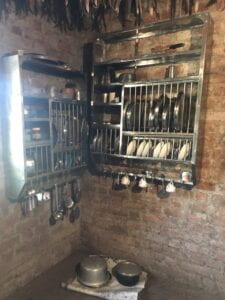Syllabus designed by Rajni Bhargava for Elementary Hindi (YHS Fulbright-Hays 2022)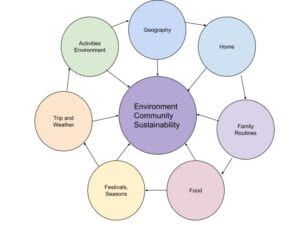 Textbooks and Links:
Textbooks and Links:
1) Complete Hindi: Your complete Speaking, Listening, Reading and Writing (Teach Yourself) , By Rupert Snell (Author) ISBN-13: 978-1444106831, ISBN-10: 9781444106831 or https://drive.google.com/file/d/16PkQUb7odQEwwx74GTrURsQHUEKT1atY/view?usp=sharing.
2) Hindi Praveshika- by Herman.P. Van Olphen (not required but useful for practicing writing the letters) – – https://drive.google.com/file/d/16RLNQMJ_orvHoIyI23LWIyl36WDIUMoB/view?usp=sharing ( for practicing writing)
3) https://openbooks.lib.msu.edu/ll151/ (Basic Hindi 1 by Rajiv Ranjan)
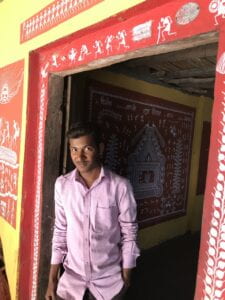 WEEK 1. Topic: Getting to know each other
WEEK 1. Topic: Getting to know each other
Language and Function:
- greet each other and take leave in culturally appropriate ways
- negate and affirm (Chapter 1)
- write your name
- recognize specific sounds: aspiration of voiced and voiceless consonants, velar sounds, retroflexion, vowel length.
- identify basic sentence structure
- ask and answer memorized questions with kyaa and kahaaN (Chapter 1)
- use sentence structure SOV and the verb hona (Chapter 1)
- recognize and memorize basic phrases when introducing oneself (Textbook: The Hindi Script and Sound System, Chapter 1)
Resources for writing:
- https://www.hindibhasha.com/index.html (for listening to the sounds)
- https://hindilanguage.info/devanagari/
- https://hindilanguage.info/lessons/lesson-2-devanagari-vowels/
- https://www.mindurhindi.com/learn-hindi-alphabets/hindi-barakhadi-in-english/
Resources for speaking:
- Learning Hindi Vowels
- Learning the Hindi Consonants
- Introduction to Hindi Pronunciation
- https://openbooks.lib.msu.edu/ll151/part/chapter-1/
- https://openbooks.lib.msu.edu/ll151/chapter/greetings/
- https://openbooks.lib.msu.edu/ll151/chapter/informal-conversations/
- https://openbooks.lib.msu.edu/ll151/chapter/formal-conversations/
WEEK 2. Topic: Let’s go to India. Geography.
Language and Function:
- introduction to script and some conjuncts (Textbook: The Hindi Script and Sound System, Chapter 1)
- name main states and cities in India
- name the four directions
- ask questions with kyaa and kahaaN (Chapter 1)
- use simple postpositions: meiN, par, ke paas, se duur
- use demonstrative pronouns: yah, vah > ye, ve (Textbook: Chapter 2 and 3)
- use adjectives and noun-adjective agreement baRaa, choTaa
- use of singular/plural, masculine/feminine, use of oblique (Textbook: Chapter 1, 1.3, 1.4)
- use copula sentence
Resources:
- https://hindilanguage.info/hindi-grammar/postpositions/
- https://hindilanguage.info/hindi-grammar/pronouns/demonstrative-pronouns/
- https://hindilanguage.info/hindi-grammar/adjectives/
- https://www.mapsofindia.com/india-map-hindi.html
- Textbook: Chapter 1, 2 and 3
- https://openbooks.lib.msu.edu/ll151/chapter/grammar-3/ (post positions)
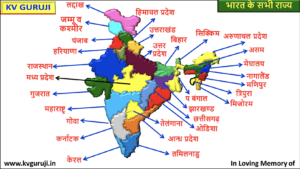 WEEK 3. Topic: Where am I and my family from?
WEEK 3. Topic: Where am I and my family from?
Language and Function:
- name and identify relatives
- ask and answer questions about where my family is from
- ask for and give personal information
- express possession with kinship terms (kaa/ke/kii) (Textbook: Chapter 5, 5.3)
- ask and answer questions about age
- use interrogative pronouns (kaun, kiskaa, kiskii, kiske,kahaaN se)(Textbook: Chapter 2, 2.1)
- use possessive pronouns (Textbook: Chapter 6.4)
- use of numbers (1-10)
- use emphatic hii and bhii (Textbook: Chapter 4)
- meet and exchange personal information with family in India
Resources:
- https://hindilanguage.info/hindi-grammar/pronouns/demonstrative-pronouns/
- https://blogs.transparent.com/hindi/hindi-numbers-
1-100/ - https://www.ucl.ac.uk/atlas/hindi/counting.html
- http://hindistartalk.lrc.columbia.edu/lesson/rathore-family-our-home/
- Textbook: Chapter, 2, 4, 5, and 6
- https://openbooks.lib.msu.edu/ll151/chapter/grammar_oblique-case/
- https://openbooks.lib.msu.edu/ll151/chapter/grammar_apostrophe-s-s-in-hindi/
WEEK 4. Topic: My Home
Language and Function:
- use post positions mein, par, ke paas, se duur and demonstrative pronouns: ye, ve, yah, vah (Textbook: Chapter 2 and 3)
- use adjectives like baRa
a, choTaa, gandaa, saaf
use compound post postpositions: ke andar, ke baahar, ke upar, ke niiche - describe your home and rooms
- use of singular/plural, masculine/feminine, use of oblique (Textbook: Chapter 1, 1.3, 1.4)
- use of present continuous tense
Resources:
- https://wp.nyu.edu/virtualhindi/home-and-neighborhood/our-home/
- http://hindistartalk.lrc.columbia.edu/lesson/rathore-family-our-home/
- Performance Task: https://wp.nyu.edu/virtualhindi/house/
- https://wp.nyu.edu/virtualhindi/packing/
- https://quizlet.com/527949153/language-flash-cards/?x=1qqt
- https://www.mindurhindi.com/hindi-grammar-rule/postpositions-in-hindi/
- Textbook: Chapters 1, 2 and 3
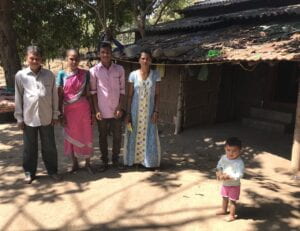 WEEK 5: Topic: Family and Daily Routines
WEEK 5: Topic: Family and Daily Routines
Language and Function:
- List and identify various daily activities
- Tell time
- identify and name days of the week
- ask and answer questions about daily routine
- use noun-adjective agreement, feminine and masculine (Textbook: Chapter 1, 1.3, 1.4)
- use personal pronouns in direct and oblique forms (Textbook: Chapter 1, 1.1)
- use of present habitual (Textbook: Chapter 6.1)
- use reflexive pronouns (apnaa, khud) (Textbook: Chapter 6.3)
- use numbers (1-30)
- use past tense (Textbook: Chapter 4)
- describe what people/family do in each room of the house everyday
Resources:
- https://hindilanguage.info/hindi-grammar/verbs/basic-verb-forms/present-habitual/
- https://hindilanguage.info/hindi-grammar/pronouns/personal-pronouns/
- https://hindilanguage.info/hindi-grammar/adjectives/
- https://blogs.transparent.com/hindi/hindi-numbers-1-100/
- https://blogs.transparent.com/hindi/days-of-the-week-in-hindi/
- Textbook: Chapters 1, 4 and 6
WEEK 6. Topic: Regional Foods of India
Language and Function:
- identify and name fruits and vegetables
- identify and name regional dishes of India in Rajasthan, Maharashtra and Himachal Pradesh
- ask and answer questions about price, quality and quantity
- identify and list ingredients used in cooking
- create and follow a simple recipe
- use numbers (1-30)
- express needs (Textbook: Chapter 7, 7.3) and likes/dislikes
- use indirect verbs with nouns or with infinitives: X + ko noun + chaahiye (need) or X+ ko infinitive/noun + infinitive + chaahiye
- use of imperatives (tum form)
- use X+ ko infinitive/noun + infinitive + pasand hai
Resources:
- http://hindistartalk.lrc.columbia.edu/lesson/vegetable-market/
- https://wp.nyu.edu/virtualhindi/food-habits/
- https://wp.nyu.edu/virtualhindi/khakra-pizza/
- https://hindilanguage.info/hindi-grammar/postpositions/ko/
- https://hindilanguage.info/hindi-grammar/verbs/mood/imperative-mood/
- Textbook: Chapters 7
WEEK 7. Topic: Friends, Activities and the Environment:
Language and Function:
- ask and answer questions about personal preferences
- describe leisure activities, hobbies and habits
- ask about and express wishes and preferences
- make polite requests to do or not to do something (Chapter 5, 5.2)
- use infinitives with postpositions ( baiThne ke liye, khaanaa banaane ke baad)
- recognize and use days of the week and the months
- use direct infinitive with caahnaa (Chapter 13, 13.2)
- use infinitive with pasand honaa, acchaa lagnaa (Chapter 13, 13.3)
- use present progressive tense (Chapter 8, 8.1)
- use more interrogative words: kaise, kyoN
- use comparative and superlative degree of adjectives
Resources:
- https://wp.nyu.edu/virtualhindi/family/
- https://hindilanguage.info/hindi-grammar/adjectives/comparative-adjectives/
- https://hindilanguage.info/hindi-grammar/adjectives/superlative-adjectives/
- https://hindilanguage.info/hindi-grammar/verbs/infinitive-plus-hona/
- TEXTBOOK: Chapter 5, 8 and 13
WEEK 8: Topic: Seasons; Weather; Calendar, Festivals
Language and Function:
- identify and name Hindu and conventional months
- state what date and year it is by looking at a calendar
- describe seasons and their main characteristics
- describe weather related to geographical location
- match clothes with season
- use present habitual tense (Textbook: Chapter 6, 6.1)
- ask question and answer using what kya, when kahaan and where and how
- describe Diwali festival and how it is celebrated in different parts of India
Resources:
Week 9. Topic: Planning a trip to India
Language and Function:
- identify places on the map to visit and explain why
- compare the weather between several regions and plan to pack according
- accept, refuse and react to suggestions
- give simple reasons for preferences
- describe the places and sustainable practices there in simple sentences
- use future tense (Textbook: Chapter 9, 9.1)
- use conjunct verbs (Textbook: Chapter 7, 7.6)
- use connectors (is liye, kyonki, fir, etc.)
- use of saknaa, chuknaa, paanaa (Textbook: Chapter 12, 12.3)
- use of conditional sentences (Textbook: Chapter 10, 10.4)
Resources:
- https://wp.nyu.edu/virtualhindi/time-and-trip-planning/
- https://hindilanguage.info/hindi-grammar/conjunctions/
- http://learnhindifree.blogspot.com/2011/08/hindi-verbs-4-future-tense.html
- https://hindilanguage.info/hindi-grammar/conditional-sentences/
WEEK 10-11. Topic: Folk tales
Language and Functions:
- ask about and describe a series of past events
- use introductory and ending conventional phrases for story-telling
- use cohesive markers (iske baad, isii liye, uska matlab, etc.)
- use perfect tense with focus on objects + ko and agreement in masculine singular
Resources:
- https://wp.nyu.edu/virtualhindi/story-telling-crow/
- https://wp.nyu.edu/virtualhindi/story-telling-grasshopper/
- https://hindilanguage.info/hindi-grammar/verbs/basic-verb-forms/past-perfect/
- https://hindilanguage.info/hindi-grammar/conjunctions/
WEEK 12-13. Topic: Movie Project: To be assigned
Language and Functions:
- describe characters in the movie
- narrate in simple sentences the storyline
- use of cohesive markers
- use of perfect tense
Resources:
- https://hindilanguage.info/hindi-grammar/verbs/basic-verb-forms/past-perfect/
- https://hindilanguage.info/hindi-grammar/conjunctions/
- Elements of a story.docx
WEEK 14 – 15. Topic: Story Project and Review
